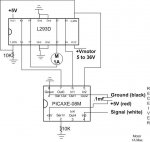Hi everyone,
I am a 2nd year mechanical engineering student from the University of New South Wales (Australia). At this point I have no experience whatsoever with electronics but will need some for the project I have been set.
This project allows at maximum, the use of 4 AA batteries. A device needs to be created which completes a track of about 10-15 metres in under 30 seconds, at some pts it will need to climb an incline of 30 degrees (for about 1 m) or climb over barriers (up to 5cm high). The device must also be able to turn
I recently purchased the AXE023 which comes with the L293D. I'm thinking i will need to use H-bridge's to control two motors but have no experience with transistors/diodes/resistors and which to choose for the task.
I have already looked at some schematics on how h-bridges are wired, but I have no clue on which transistors and diodes (to stop noise) to use.
The device would weigh approximately 1-2kg.
Any help or advice for this project would be greatly appreciated.
Thanks,
John
I am a 2nd year mechanical engineering student from the University of New South Wales (Australia). At this point I have no experience whatsoever with electronics but will need some for the project I have been set.
This project allows at maximum, the use of 4 AA batteries. A device needs to be created which completes a track of about 10-15 metres in under 30 seconds, at some pts it will need to climb an incline of 30 degrees (for about 1 m) or climb over barriers (up to 5cm high). The device must also be able to turn
I recently purchased the AXE023 which comes with the L293D. I'm thinking i will need to use H-bridge's to control two motors but have no experience with transistors/diodes/resistors and which to choose for the task.
I have already looked at some schematics on how h-bridges are wired, but I have no clue on which transistors and diodes (to stop noise) to use.
The device would weigh approximately 1-2kg.
Any help or advice for this project would be greatly appreciated.
Thanks,
John

